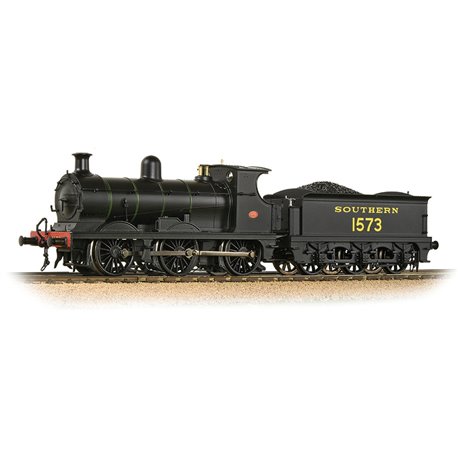No products
Product successfully added to your shopping cart
There are 0 items in your cart. There is 1 item in your cart.
Christmas and New Year
We are dispatching orders every weekday apart from Christmas Day, Boxing Day and New Year's Day.
If you order is time critical, select next day delivery at checkout.
The shop in Sandown is closed from 25th December, reopening on 30th December.
C Class 1573 Southern Railway Lined Black
31-464A
Bachmann
C Class 1573 Southern Railway Lined Black
- Fully detailed and decorated cab interior including backhead
- Adjustable tender draw-bar length
- Sprung buffers
- Hinged tender fall-plate
In Stock
| Scale | OO (1/76) |
More info
C Class 1573 Southern Railway Lined Black
SE&CR C Class 1573 SR Lined Black
- Built: 1900 – 1908
- Built for: SE&CR (absorbed by the SR)
- Designed by: Harry Wainwright
- Duties: mixed traffic
- Wheels: 0-6-0
Highlights
Ideal for use with our Birdcage Coaches
- Fully detailed and decorated cab interior including backhead
- Adjustable tender draw-bar length
- Sprung buffers
- Hinged tender fall-plate
History
The end of the 19th century saw the formation of the South Eastern and Chatham Railway, uniting the South Eastern Railway and the London Chatham & Dover Railway under one managing committee. Following the inauguration of its new Locomotive and Carriage Superintendent, Harry Wainwright, a project was begun to replace the small and ailing locomotives of the constituent railways with larger and more powerful machines. The C Class was created as the new railway’s statement goods locomotive, and 109 were constructed between 1900 and 1908. Although used primarily for freight duties, the C Class locomotives were also occasionally engaged in passenger work when required, often for Kent ‘hop pickers’ services.
Simple yet robust in construct, the C Class locomotives proved to be a notable success. They gave little trouble in service, achieved good speed and, for engines of a 0-6-0 wheel arrangement, provided a surprisingly comfortable ride. These qualities contributed to a long working life, with all but two of the locomotives surviving into BR ownership and many lasting until the electrification of the Kent Coast in 1959-60. Withdrawals began in 1953 and accelerated during the electrification project.




